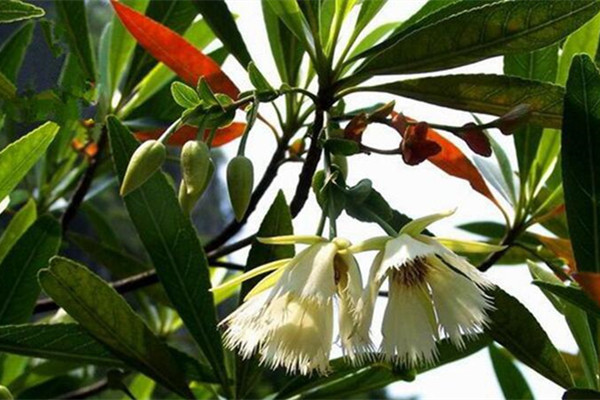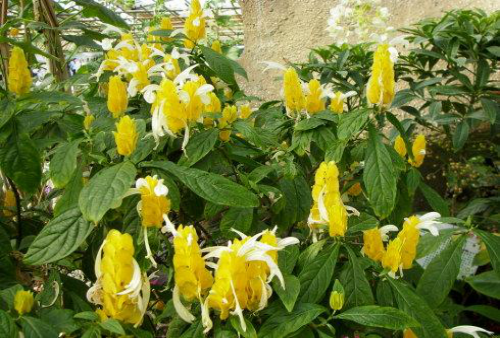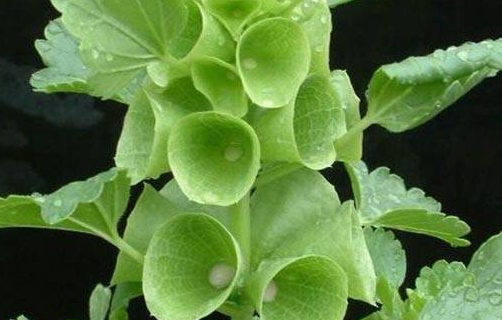Matters needing attention in cultivating olive flowers
Olive flowers are often attacked by viruses, and the common disease is anthracnose. We can spray 600 times the copper oxychloride solution for treatment, and cut off the diseased branches in time to prevent bacterial infection.

How to raise olive flowers? Matters needing attention in olive flower culture
The crown of olive flowers is tall and straight and verdant, and the flowers are delicate and white. Silver and green reflect each other in the sun, which is a symbol of wisdom, courage and victory. So, how can olive flowers be cultivated? Points for attention in olive flower culture.
1. Planting methods of olive flowers
a. Colonization of large seedlings:
When planting, the root is closely combined with the soil. The trunk can be buried 6 centimeters deep. The top is covered with yellow mud, and the trunk is covered with straw to prevent the wind from blowing and losing water in the sun. The straw must be 10 cm away from the ground and cannot come into contact with the soil, so as not to attract termites. Watering after planting, attention: (1) seedling and planting must be very careful not to break the root bark and damage the root point; (2) there is no base fertilizer in the hole, only the red-yellow soil topsoil which is easy to root is used; (3) the soil must be compacted, this is the key to survival; (4) build a protective frame after planting.
b. Seedling colonization:
Planting time: from Grain Rain to the Beginning of Summer is more appropriate.
Olive tree planting method: burning soil and legume green manure as base fertilizer and sprinkling 1 jin of lime in each hole to prevent termites. When planting, mix the surface fine soil with water into the mud, plant the seedlings into the slurry, make the lateral roots stretch naturally, and then cover the fine soil and compact it so that the root soil can be fully contacted.
2. Fertilizer and water management of olive flower
(1) Fertilizer: large amounts of elements, nitrogen, phosphorus, potassium, calcium and sulfur.
a. Fertilization for young trees:
Give priority to nitrogen fertilizer, mix properly with other fertilizers, and take frequent and thin application as the principle, generally once every two months, or before and after the extraction.
(2) fertilization of fruiting trees:
Three times a year: pre-anthesis fertilizer: about March nitrogen or: pre-anthesis fertilizer
Post-fruit fertilizer: nitrogen and potassium fertilizer for strong flowers and fruits around October
Fertilizer for flower bud differentiation: nitrogen, phosphorus and potassium fertilizer after fruit from November to December
Fertilization method: under dripping water outside the crown, open a ring ditch with a depth of 20 cm, or two half-moon-shaped ditches, and apply fertilizer into the ditch. If it is liquid fertilizer, cover the soil after it drips, and then cover the soil after the dry fertilizer is applied.
3. Olive flower shaping and pruning
(1) shaping of young trees:
After the seedlings have been planted and survived, they will be dried when the seedlings are 1.5 meters high. It is usually cut at about 0.8 meters. Five branches were selected as the main branches in different directions, and when the main branches were too long, the main branches were cut short at 60 cm, and each main branch left 3 lateral branches, which were treated step by step to form an early fruiting and high yield crown.
(2) pruning olive flower and fruit trees:
In principle, the initial production trees are mainly light pruning, mainly cutting off overlong branches and promoting lateral branches; pruning in the peak period is mainly to regulate the ratio of vegetative growth to reproductive growth; pruning in the later stage is mainly to cut off the withered branches, shade branches, disease and insect branches inside the crown.
Olive flower culture method is actually relatively simple, for potted flower friends must know how to maintain it. These are the ways to cultivate olive flowers.
How to grow olive flowers? Culture methods and matters needing attention of olive flowers
[FAQ] how to grow olive flowers? What are the breeding methods and matters needing attention of olive flowers?
[expert answer] the culture method of olive flower is actually relatively simple, for potted flower lovers must know how to maintain it, the following is to introduce the culture method of olive flower.
1. Planting method
a. Colonization of large seedlings:
When planting, the root is closely combined with the soil. The trunk can be buried 6 centimeters deep. The top is covered with yellow mud, and the trunk is covered with straw to prevent the wind from blowing and losing water in the sun. The straw must be 10 cm away from the ground and cannot come into contact with the soil, so as not to attract termites. Watering after planting, attention: (1) seedling and planting must be very careful not to break the root bark and damage the root point; (2) there is no base fertilizer in the hole, only the red-yellow soil topsoil which is easy to root is used; (3) the soil must be compacted, this is the key to survival; (4) build a protective frame after planting.
b. Seedling colonization:
Planting time: from Grain Rain to the Beginning of Summer is more appropriate.
Olive tree planting method: burning soil and legume green manure as base fertilizer and sprinkling 1 jin of lime in each hole to prevent termites. When planting, mix the surface fine soil with water into the mud, plant the seedlings into the slurry, make the lateral roots stretch naturally, and then cover the fine soil and compact it so that the root soil can be fully contacted.
2. Fertilizer and water management
(1) Fertilizer: large amounts of elements, nitrogen, phosphorus, potassium, calcium and sulfur.
a. Fertilization for young trees:
Give priority to nitrogen fertilizer, mix properly with other fertilizers, and take frequent and thin application as the principle, generally once every two months, or before and after the extraction.
(2) fertilization of fruiting trees:
Three times a year: pre-anthesis fertilizer: about March nitrogen or: pre-anthesis fertilizer
Post-fruit fertilizer: nitrogen and potassium fertilizer for strong flowers and fruits around October
Fertilizer for flower bud differentiation: nitrogen, phosphorus and potassium fertilizer after fruit from November to December
Fertilization method: under dripping water outside the crown, open a ring ditch with a depth of 20 cm, or two half-moon-shaped ditches, and apply fertilizer into the ditch. If it is liquid fertilizer, cover the soil after it drips, and then cover the soil after the dry fertilizer is applied.
3. Shaping and pruning
(1) shaping of young trees:
After the seedlings have been planted and survived, they will be dried when the seedlings are 1.5 meters high. It is usually cut at about 0.8 meters. Five branches were selected as the main branches in different directions, and when the main branches were too long, the main branches were cut short at 60 cm, and each main branch left 3 lateral branches, which were treated step by step to form an early fruiting and high yield crown.
(2) pruning the result tree:
In principle, the initial production trees are mainly light pruning, mainly cutting off overlong branches and promoting lateral branches; pruning in the peak period is mainly to regulate the ratio of vegetative growth to reproductive growth; pruning in the later stage is mainly to cut off the withered branches, shade branches, disease and insect branches inside the crown.
[editor's comments] there are many varieties of olives, including seven in China, two of which are cultivated as fruit trees, and most of the others are ornamental plants. Olive flowers are the national flower of Greece and a symbol of "wisdom, courage and victory". The first Agricultural Classic editor above introduced to you the methods of planting and conservation of olive flowers. I hope this article will be helpful to you.
- Prev

Method for breeding golden bract flower
Cuttage time is best in April, this time the most likely to survive, from the old branches take about 8-10 cm long tender shoots, cut in the sand, pay special attention to temperature and humidity to maintain the temperature above 21℃, humidity about 80%, about half a month can take root. all right
- Next

How to raise shellfish flowers
Soil shell flower culture has relatively high requirements for soil, requiring loose, breathable, fertile and well-drained soil, the soil should not be viscous, otherwise it will not be conducive to plant growth. We can configure the soil ourselves, or we can go to the florist to buy special soil for shell flowers. Shellfish flowers like the sun very much.
Related
- Fuxing push coffee new agricultural production and marketing class: lack of small-scale processing plants
- Jujube rice field leisure farm deep ploughing Yilan for five years to create a space for organic food and play
- Nongyu Farm-A trial of organic papaya for brave women with advanced technology
- Four points for attention in the prevention and control of diseases and insect pests of edible fungi
- How to add nutrient solution to Edible Fungi
- Is there any good way to control edible fungus mites?
- Open Inoculation Technology of Edible Fungi
- Is there any clever way to use fertilizer for edible fungus in winter?
- What agents are used to kill the pathogens of edible fungi in the mushroom shed?
- Rapid drying of Edible Fungi

